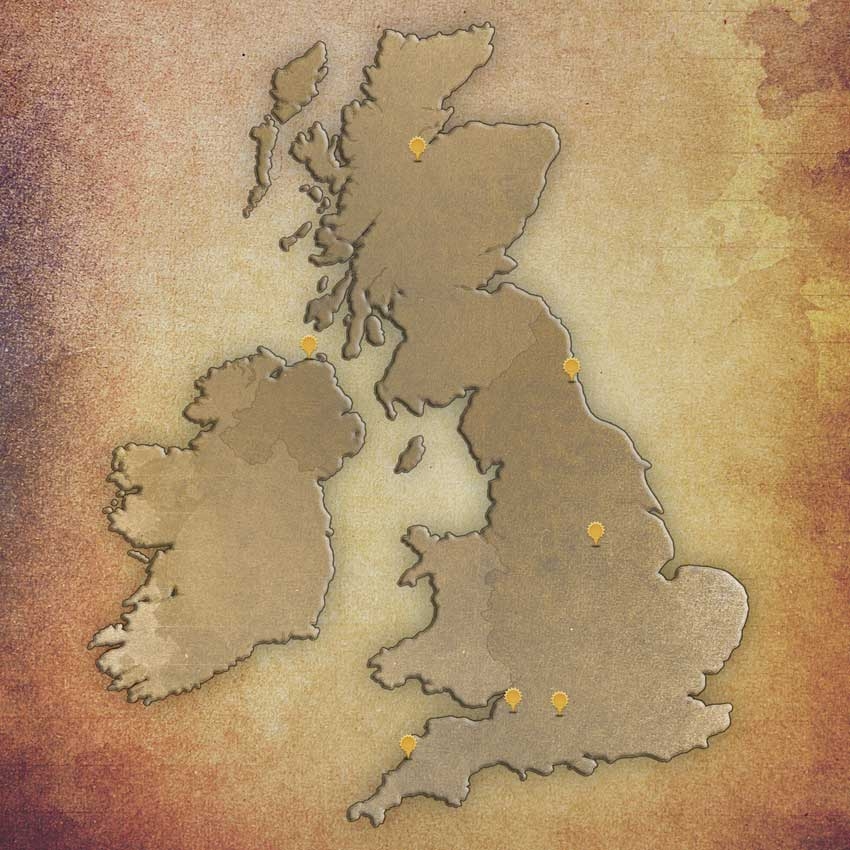Take your class on a mythical adventure around the UK British history is rich in myths and legends, such as the Lambton Worm.
Many stories were based in, or possibly inspired by, places that can still be visited today. There are also numerous intriguing ancient sites around the country that we know little about, but that will inspire children to speculate and invent their own stories.
The Loch Ness Monster
Probably the most famous legendary monster is Nessie, who is said to inhabit the waters of Loch Ness. Situated in the Scottish Highlands south-west of Inverness, the freshwater loch is approximately 37km long. It contains more fresh water than all the lakes in England and Wales combined! The Loch Ness Centre and Exhibition offers school visits and a range of downloadable resources. www.lochness.com/schools.htm
Finn McCool
According to legend, the Irish giant, Finn McCool, built a bridge across the North Channel when challenged to a fight by the Scottish giant, Benandonner. The spectacular sweep of 40,000 interlocking columns that lead from the cliff foot into the sea were said to be the remains of this bridge, but are in fact the result of an ancient volcanic eruption. www.nationaltrust.org.uk/giants-causeway
Stone circles
The circles of standing stones at Stonehenge and Avebury can’t fail to ignite your pupils’ imaginations. No-one knows for sure when and how they were built and what they were used for, so it is up to the children to decide! English Heritage has recently launched a new learning programme and multifunction education space at Stonehenge that offers a wide range of activities. www.bit.ly/StonehengeEd; www.bit.ly/EHAvebury
King Arthur
The Arthurian legends have something for everyone – knights on horseback, beautiful maidens, magicians and magic. There are links to his life at several sites around south-west England and Wales. Tintagel Castle on the north Cornwall coast is said to be Arthur’s birthplace and there you can explore the ruins and visit Merlin’s Cave. The Roman town of Caerleon also features as a significant location in the stories of his life, and you can see the site of his burial at Glastonbury Abbey. www.tintagelcastle.co.uk; www.glastonburyabbey.com
The Lambton Worm
With the spiral pattern of furrows on its slopes, Penshaw Hill near Sunderland is said to be one of the hills that the Lambton Worm coiled itself around. It is in fact the only known site of a triple rampart Iron Age fort in the north of England. At its summit stands the Earl of Durham’s Monument, better known as the Penshaw Monument. This local landmark is a 20-metre high replica of the Temple of Hephaestus in Athens. www.nationaltrust.org.uk/penshaw-monument
Robin Hood
Another great hero of British legend is, of course, Robin Hood. His famous bronze statue stands outside Nottingham Castle in the city centre. It is on the site of the medieval castle where his arch-enemy the Sheriff of Nottingham plotted against him. A few miles down the road is Sherwood Forest where Robin Hood and his Merry Men made their home. The forest contains some of the oldest trees in Europe including the Major Oak, which is estimated to be 800 years old! www.bit.ly/Nottcastle www.bit.ly/Sherwoodnaturereserve
The Witch of Wookey
Visit the limestone caves at Wookey Hole to see the petrified remains of the famous witch, who was reputedly turned to stone by a monk from Glastonbury. You can tour the magnificent caverns that lie deep under the Mendip Hills, and also make your own paper at the Victorian paper mill, which is powered by the River Axe that flows through them. www.wookey.co.uk
